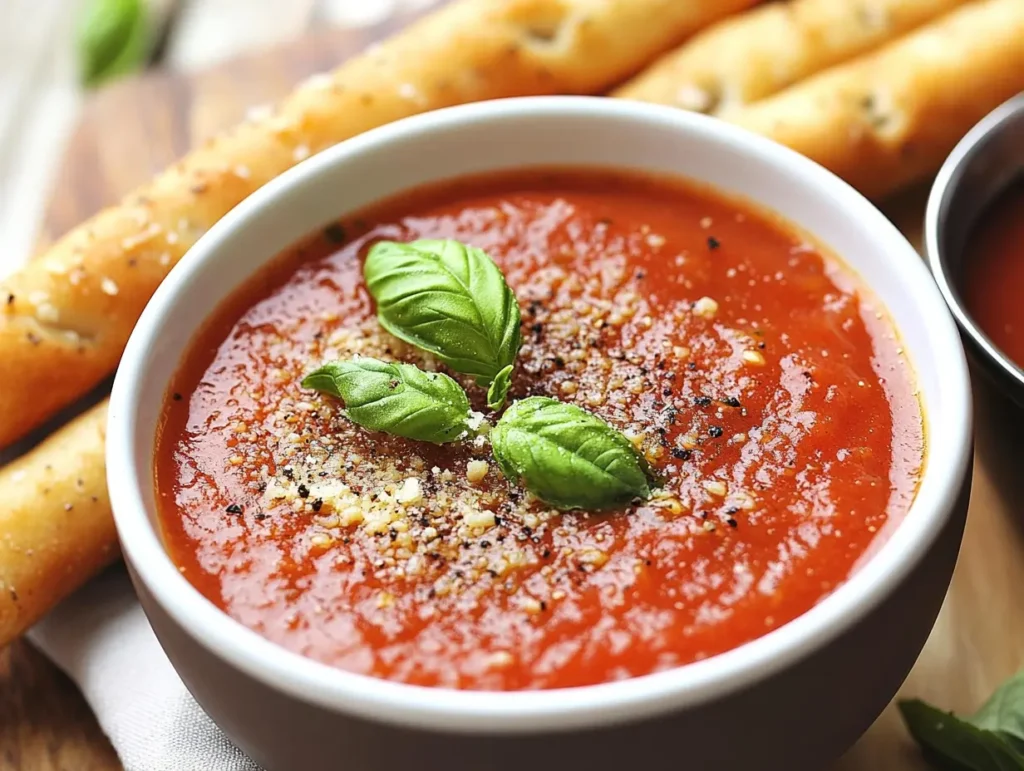Understanding the difference between marinara sauce and pasta sauce is key to mastering Italian cooking. Both are beloved staples, yet each brings its own flair to the table. While they may appear similar at first glance, marinara sauce and pasta sauce differ in texture, ingredients, flavor, and cooking time. This guide breaks down the difference between marinara sauce and other pasta sauces to help you choose the perfect match for your next culinary creation—whether you’re preparing a quick weeknight meal or a traditional Italian feast.
Difference Between Marinara Sauce
Table of Contents

What is Marinara Sauce?
Marinara sauce is a light, quick-cooking tomato-based sauce originating in southern Italy. Made from fresh tomatoes, garlic, olive oil, and basil, it is known for its simplicity and versatility. This sauce is often used for dishes requiring a lighter, tangy flavor.
Characteristics of Marinara Sauce:
- Texture: Thin and smooth.
- Flavor: Fresh and tangy.
- Uses: Ideal for dipping breadsticks, serving as a pizza base, or pairing with seafood dishes like halibut marinara sauce.
Learn more about its history and preparation on Wikipedia.
Difference Between Marinara Sauce
What is Pasta Sauce?
Pasta sauce, while building on the base of marinara, is designed for richer, heartier dishes. It includes additional ingredients like onions, cream, meat, or wine, making it thicker and more robust.
Characteristics of Pasta Sauce:
- Texture: Thicker and heartier.
- Flavor: Savory, rich, and layered.
- Uses: Best for hearty pasta dishes such as lasagna, spaghetti, or baked ziti.
Key Differences Between Marinara Sauce and Pasta Sauce
Texture and Consistency
- Marinara is thinner, making it ideal for lighter dishes or dipping.
- Pasta sauce is thicker, designed to cling to pasta noodles.
Ingredients
- Marinara relies on a minimal ingredient list with fresh tomatoes and herbs.
- Pasta sauce incorporates additions like cream, vegetables, or meat for extra depth.
Cooking Time
- Marinara is ready in under 30 minutes.
- Pasta sauce often requires over an hour to develop its full flavor.
Flavor
- Marinara offers a fresh, tangy taste.
- Pasta sauce provides a robust, savory profile with layered complexity.
Health and Nutritional Comparisons
Tomato-based sauces are generally healthy, providing antioxidants, vitamins, and minerals. However, their nutritional content depends on the added ingredients.
Marinara Sauce
- Calories: Lower, typically around 50 calories per serving.
- Health Benefits: Ideal for lighter, health-conscious meals.
Pasta Sauce
- Calories: Higher due to cream, meat, or extra oil.
- Nutritional Value: Provides more protein and fats, depending on added ingredients.
For tips on healthy cooking alternatives, check out low-calorie ingredient ideas.
Difference Between Marinara Sauce
Culinary Applications and Pairings
When to Use Marinara Sauce
- As a dip for breadsticks or mozzarella sticks.
- As a topping for pizzas.
- Paired with seafood, such as shrimp or halibut.
When to Use Pasta Sauce
- With pasta dishes like spaghetti, lasagna, or fettuccine.
- As a base for baked dishes like ziti or manicotti.
- Paired with proteins like meatballs or sausages.
Difference Between Marinara Sauce
Cooking and Customization Tips
Making Classic Marinara Sauce
- Heat olive oil in a skillet over medium heat.
- Sauté minced garlic until fragrant.
- Stir in crushed tomatoes, salt, and fresh basil.
- Simmer for 20–30 minutes to achieve a tangy, flavorful sauce.
Customizing Pasta Sauce
- Add sautéed onions, carrots, or celery for sweetness.
- Stir in ground meat or sausage for protein.
- Use red wine or cream to create a rich texture.
For more ideas, visit Recipes Mint.
FAQs
Can marinara sauce be used as pasta sauce?
Yes, marinara can be used for pasta, but it may need thickening to properly coat the noodles.
What is the main difference between these sauces?
Marinara is lighter and quicker to prepare, while pasta sauce is thicker and more robust with added ingredients.
How can I make marinara sauce thicker?
Simmer it longer to reduce liquid, or add tomato paste for more body.
Difference Between Marinara Sauce
Conclusion
Understanding the difference between these two sauces helps you make the right choice for your dishes. Marinara is perfect for light, tangy meals, while pasta sauce is ideal for hearty, robust dishes. Both have their place in the kitchen, offering endless opportunities for customization.
For more recipes and cooking inspiration, visit Recipes Mint!
Difference Between Marinara Sauce
